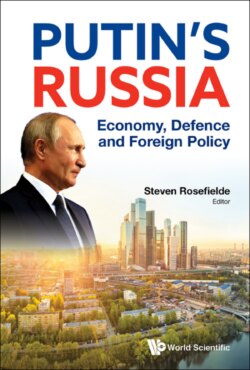Читать книгу Putin's Russia - Группа авторов - Страница 30
На сайте Литреса книга снята с продажи.
Chapter 3 State-Led Innovation and Uneven Adaptation in Russia
ОглавлениеSatoshi Mizobata
Russia lost its innovation base inherited from the Soviet period during the 1990s.1 The Putin regime tried to recover lost ground after 2000 by focusing on a long-term growth strategy. Innovation has become a cornerstone of its economic policy seeking to reduce Russia’s heavy dependence on natural resource (oil and gas) exports, diversify, enhance international competitiveness and raise labour productivity in an adverse environment hampered by a decreasing population and an ageing society.
Adverse external conditions exacerbate these problems. On the one hand, Western economic sanctions imposed after 2014 compelled Russia to import substitutes. On the other hand, international competition for technological/scientific hegemony intensified. Innovation became essential because productivity deteriorated in all the developed countries (Knyaginin, 2017, p. 20). The German revolution-dubbed “Industry 4.0” (the Fourth Industrial Revolution) designed to meet this challenge threatens to increase Russia’s relative technological backwardness.2 Japan emulated Germany with its own “Society 5.0” strategy, and China announced its “Made in China 2025” initiative. All these initiatives seek to accelerate long-term growth. The US–China trade war is also partly a political conflict over innovation policy. Even though the “socio-economic situation in Russia has remained difficult” (Mau, 2019, p. 10), Russia adapted itself to these global trends. It is energetically pursuing its own long-term growth and innovation strategies.
This chapter uses three criteria to evaluate the results of Russia’s long-term growth and innovation strategies. It looks at institutional aspects of state-led innovation, the timeliness of Russia’s innovations and technological diffusion against the background of global trends.
